Product detail pages are more important than ever. Even before the coronavirus led to widespread lockdowns, 88% of shoppers said they rely on digital product content to decide what to buy. Since COVID-19, your product pages may be the first and only interaction with your brand before making a purchase decision, which means updating to today’s best practices may be the key to survival.
Product detail pages (PDPs) now serve as the merchandiser, salesperson, and technician for your brand, all in one. Customers view them as a source of truth for each product in your lineup. Product detail page best practices have evolved to meet this challenge.
In the past, the measure of success for a PDP was conversion rate. While that’s still of primary importance, profitability is the ultimate goal, which requires preventing costly returns. Clarity & transparency in PDPs is imperative. Aligning your customer’s expectations with your product offerings can prevent up to 75% of support calls & returns for some categories, which are huge cost centers for many brands.
Finally, a good PDP creates trust. You have a chance to delight your customer and create a promoter of your brand. If you’ve done a good job with the PDP and updated to 2020’s best practices, your product, its delivery, and the assembly & installation process should be exactly what your customer expects. Remember, your PDP is the starting point for what is hopefully a long & mutually beneficial relationship.
So what’s at stake on a product detail page?
- First impression of your brand
- Revenue (conversions)
- Return & support call rates (losses)
- Opportunity to create a loyal brand promoter
To meet 2020 product detail page best practices & expectations, include the following for each product:
- A variety of images showing all sides of the product
- Videos of product use
- Accurate product specifications, including dimensions & materials
- A chart comparing similar products in your line
- Delivery expectations
- Transparent details about assembly or installation, including any additional parts or tools your customer will need so they can use the product right away
- User generated content from verified customers
Multiple Detailed Images
Consumers want to see several images of each product. The costlier the purchase or more complex the product, the more images you should include.
Give a 360º view: Each product should be shown from multiple angles. If possible, provide a rotating view of the finished product. It’s increasingly considered a best practice, and some retailers highly encourage it.
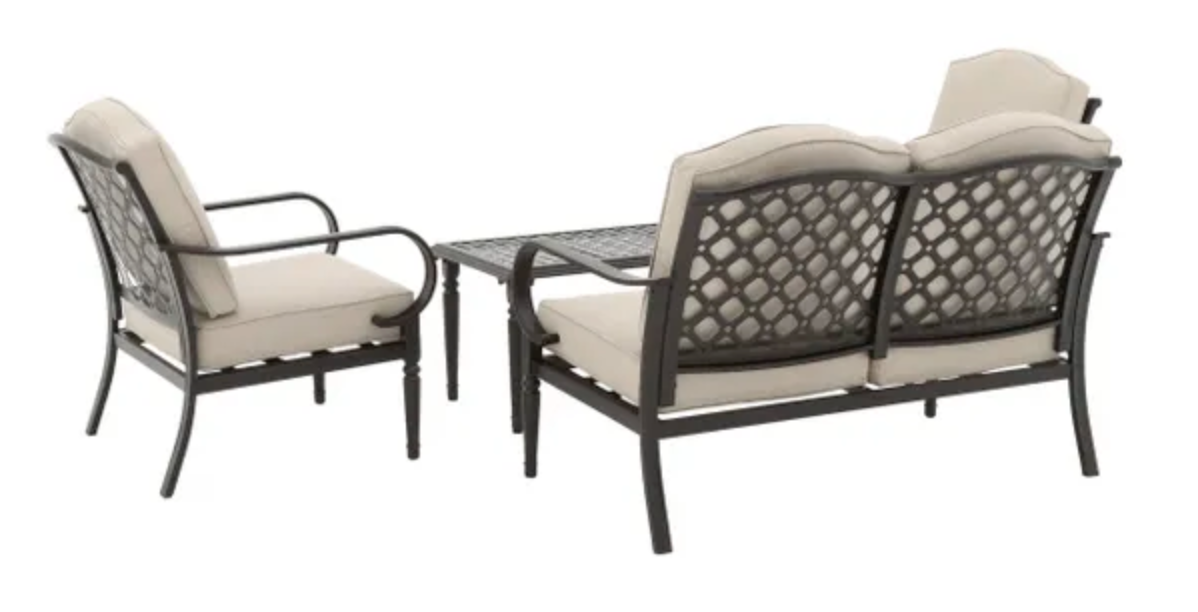
A rotating 360º-view allows visitors to see the detail on the back of this patio set.
Provide a sense of scale: You’ll also experience fewer returns if you include images that show the scale of the product. It’s common for customers to radically misjudge or ignore dimensions. Providing a sense of scale will help eliminate one cause of returns. For large, heavy, and bulky products, scale is even more important because visitors need to know what kind of physical effort may be required to move the boxes to their desired location.
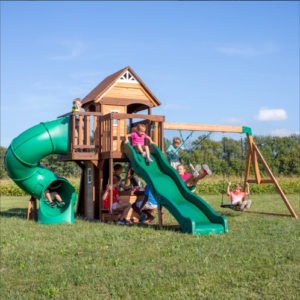
Backyard Discovery provides several images of children climbing on this large playset. The images give customers a good sense of the appropriate age range as well as a better idea of the impressive scale of this set.
Include features in the carousel: Provide any other pertinent information or selling points in the image thumbnails.
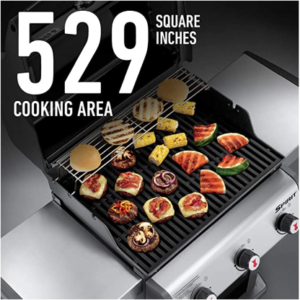

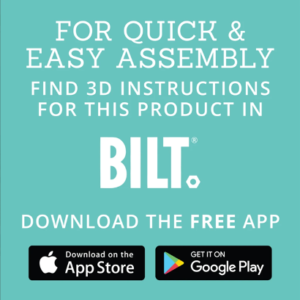
Weber uses image carousels to show multiple views of the product in use as well as highlight grill features.
Videos
Videos are commonly featured in the thumbnail carousel to provide a greater level of comfort & familiarity with the product, as well as to promote features & benefits. Retailers report high quality videos can increase conversions by up to 85%. Your goal is to immerse the visitor in the full buying experience and help them imagine the product in use.
Each Backyard Discovery PDP on HomeDepot.com displays a lifestyle video of the product in use, and a video overview of the 3D interactive assembly instructions they provide on the BILT app. Videos don’t need to be elaborate. Sinkology features a simple animated before & after video to highlight the difference a new farmhouse sink can make in the kitchen.
Product Specifications
View this section as an opportunity to instill confidence in your product’s engineering & manufacturing. Complete and accurate specs mean your team has communicated any manufacturing changes. Include all the details a customer may need to make decisions about their purchase.
Dimensions & materials: Include measurements in both imperial and metric units to make it easier for every customer. If customers will benefit from knowing more details, such as additional space that may be needed, list that information too. For example, if a product needs six inches of overhead clearance for safety purposes, include that information along with the dimension details. One of our brand partners found customer measuring mistakes to be a primary cause of returns so we created a BILT instruction set to educate shoppers before they purchase. Don’t underestimate the impact of clarity in measurements. Also include an accurate list of materials. Again, it shows command over your engineering & manufacturing process.
Feature information: Do not expect customers to understand your model naming conventions and automatically know, for example, what a 38 Inch-210 Xtreme DB8 with FitLock Technology means. Use clear descriptive language in product names and features. What is FitLock Technology? How is it better? While we made up this example, we’ve all encountered ecommerce sites that are a challenge to decipher. An information button can work wonders here. If you convince your customer they need FitLock Technology, allow them to filter or search by products with this feature.
You want shoppers to understand the product within a few seconds, or you risk making them feel stupid.
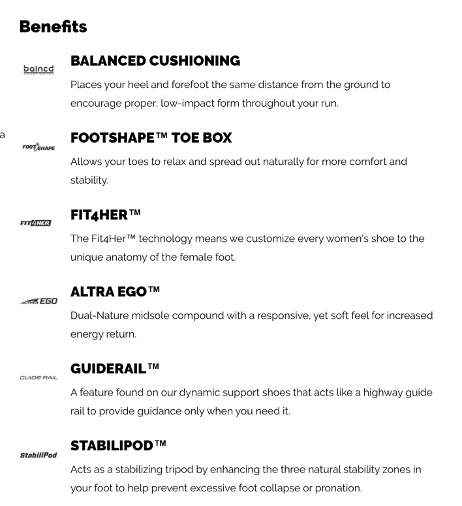
The benefits of this shoe brand are made-up trademarks, but at least they’re accompanied by explanations.
Comparison Chart
If your product lineup shares similarities, a simple comparison chart will help customers understand the differences and choose the product that best fits their needs. Include images in the comparison chart so consumers will have a way to visually differentiate between model numbers.
You must teach your customers the differences in your offerings, or they will be overwhelmed and go to a site with a limited, well-edited selection.
Post-Purchase
Empower your shoppers with knowledge before they buy, and they’ll appreciate the information. Customers perceive operational communications — messages about the delivery, the product, or their purchase — as the brand watching out for their best interests.
Delivery: Be as clear and accurate as possible about delivery dates and expectations, particularly with heavy or oversized products. Note whether the item will be delivered by a standard carrier or a service that will deliver boxes upstairs or inside the house.
Assembly or Installation Details: Shoppers want transparency. In the past, vendors avoided listing assembly information in the PDP. That is a narrow approach, equivalent to viewing your customer interaction with blinders on and ignoring the perils in the periphery. It doesn’t consider the entirety of your customer relationship. It is better to prepare consumers and explain set-up requirements to manage expectations. Otherwise, your customers will feel a pang of disappointment or shock once the box (or boxes) arrives on their doorstep and they need more tools, batteries, additional parts, manpower, or time in the day to be able to use their new purchase. According to a major national brand, assembly frustration accounts for up to 75% of returns and customer support calls for some merchandise categories. Worst of all, your customer may feel irritated instead of excited about their purchase.
There’s no need to shy away from addressing what some in merchandising would consider a “daunting” assembly. Simply inform your customer so they know what to expect beforehand. Assembly can even work in your favor by demonstrating thoughtful engineering and quality parts.
“Your assembly instructions right on point, and your engineering five star. As a mechanical engineer you guys were right on point, and the materials that you use good quality and rust free.”
5-star review of the Weber Spirit II E/S-210
A growing number of brands include assembly information in the product image carousel, including BILT assembly estimates, a video overview of the instructions, and a QR code leading directly to the full 3D interactive instructions on BILT. They find it builds trust with the shopper, advertises the brand’s concern for their overall experience, shows respect for their customers’ time, and decreases returns.

![]()
BILT assembly/installation information featured in PDP image carousels.
Reviews and other User Generated Content
User generated content (UGC) in the form of reviews or questions & answers is of utmost importance. The 2019 Shopper Experience Index found that products with at least one customer review had more than 3x the conversions than those with no reviews. The Target.com team is focused on capturing at least eight reviews for each product detail page, as their data indicates it boosts customer confidence and is a continual source of fresh content for search engine optimization. Shoppers must be certain the reviews are authentic and unbiased. While sampling programs can help new products gain traction, incentivized reviews must be marked as such. Whether the mistrust is deserved or not, most shoppers suspect influencers or sampling participants continue to be invited to contribute because, despite any true criticism, they err on the side of flattery.
Viewing UGC as a tool to simply increase conversions is short-sighted. Its real value stretches far beyond immediate conversions into brand building and loyalty economics. With UGC, you’re receiving direct feedback on your products and insight into the customer journey, unique awareness into thousands of individual experiences with your brand. From that feedback, you can extract information to improve your offerings and customer experiences. UGC provides an opportunity to create and strengthen customer relationships & loyalty. It’s a brand’s opportunity to respond to their customers with words, actions, and continuous improvement.
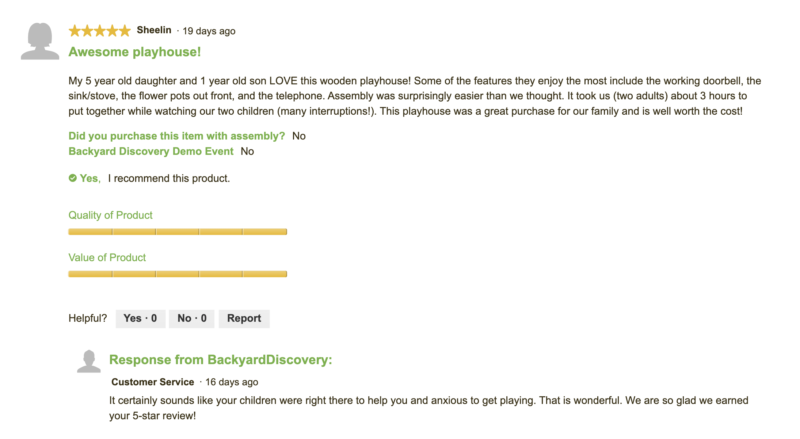
The Backyard Discovery team responds quickly to nearly every customer review.
Empower your teams and invest in resources that allow them to respond quickly with solutions for each customer. After all, the complete chain of brand replies and responses to consumer questions is on display on your PDP. Use these interactions to show the world you care about your customers.
Your PDPs are imperative to success, and it’s never been so easy to get them right.




